How to Talk to Family About Medication Assisted Treatment
by Kay Miller Temple, Medico
Related Articles:
Understanding the Science of Hurting and Opioids
The "1000" of MAT: Medications for Opioid Utilise Disorder
Rich or poor, young or onetime, urban or rural, highly educated or less then, from nascence to final jiff, a universal experience is hurting. Patients and families hope – and expect – that modernistic medicine volition relieve that feel. Opioids are often the healthcare provider's first choice for handling.
Opioids' impact on pain varies depending on the cause of the pain. Ongoing use — coupled with genetic predisposition and vulnerable psychosocial settings — can crusade what scientists at present recognize as a chronic disorder of the brain: opioid employ disorder, or OUD. Medication-assisted treatment, or MAT, is an effective evidence-based handling for opioid utilize disorder.
Opioids and Rural America: Information Is Plentiful
Rural experts signal out that fifty-fifty though decease rates related to opioids don't exceed those related to booze use disorder or suicide, the great concern is due to the rate of increment in these deaths. An October 2017 CDC MMWR report provides a granular await at urban and rural opioid data. From 1999 to 2015, the written report reveals a "rising death rate of drug overdoses in rural areas," finding a prevalence charge per unit that increased 325%, contrasting with an urban increment charge per unit of 198%. The report also highlights one probable cause of this increment is "persistent limited access to substance abuse treatment services in rural areas." The written report'south experts advise ii public health interventions for improving rural statistics: prevention activities, for case using opioid prescribing education for chronic pain; and creating better access to evidence-based substance corruption treatment, including medication-assisted treatment (MAT).
Rural public health providers hope increased access to MAT will accept a similar positive bear upon on rural opioid problems that is already seen with rural prevention efforts. Larry LaCross, LMSW, CAADC, CCS, who works for Cosmic Human Services, Inc. in Alpena, Michigan, confirms that the integrated approach of his organization, several local Federally Qualified Wellness Centers (FQHCs) and local MAT providers is demonstrating success with OUD treatment.
"We care for clients with meaning life struggles, and so much suffering," LaCross said. "But with MAT handling, in 6 months, nine months, a year's time, some of them take completely changed their lives. It's an absolutely remarkable turnaround to be a part of."
What Is Medication-Assisted Treatment?
Medication-assisted treatment, or MAT, is an prove-based treatment for substance use disorders, including OUD. The Surgeon General'south 2016 report, Facing Addiction In America, says MAT "is a highly effective handling option for individuals with alcohol and opioid utilise disorders. Studies accept repeatedly demonstrated the efficacy of MAT at reducing illicit drug utilise and overdose deaths, improving retention in treatment, and reducing HIV transmission."
Methadone, buprenorphine, and naltrexone are the iii medications used for OUD. Experts say this treatment involves fractional or total blockade of trouble opioid effects in the brain. Medication selection is based on the "whole-patient" approach. According to the American Social club of Habit Medicine, no affair which medication is selected, the goal is the same: getting the patient to feel normal, accept little to no side effects or withdrawal symptoms, and have controlled cravings.
Just MAT is not simply medications. Acknowledging that MAT is often misunderstood equally a medication-lonely treatment for OUD, MAT prescribers point out that the Substance Abuse and Mental Wellness Services Administration (SAMHSA) specifically notes MAT is to be used "in combination with counseling and behavioral therapies, to provide a whole-patient arroyo to the handling of substance use disorders."
MAT Lonely? Exceptions

Dr. Miriam Komaromy, American Society of Addiction Medicine lath of directors member
Though MAT is endorsed as office of a program using medication in addition to counseling and behavioral health interventions, situations might arise where patients will want medication, but offer resistance to the other services. MAT provider and American Lodge of Habit Medicine's (ASAM) lath of directors member Dr. Miriam Komaromy suggests that with extra caution, prescribers can still help that individual.
"When someone is ready to try medication-assisted treatment, but not ready to endeavour counseling, I am willing to work with them," she said. "But, I follow them very closely. I do a lot of bank check-ins, focus on relapse prevention, management of inter-current issues. I don't say to them 'if y'all're not going to counseling, I'm non going to work with you lot.'"
Komaromy points out that because MAT sets someone upwards for becoming clear-headed, the patient will often realize they lack coping skills to deal with what often was a "part of their life masked by the substance utilise."
"Initially, someone may not be set to outset with counseling, merely ofttimes they come to the conclusion that 'hey, I don't know how to handle my feet, my acrimony,' or they recognize they want an alternative to that powerful urge to pick up a needle to handle their stress," she said.
Komaromy points out several show-based studies demonstrate that with or without counseling, MAT helps patients stop or significantly decrease their drug apply. She says these studies testify that patients who exercise non engage in counseling can still experience major benefit from medication handling, although she notes that in these studies the "no counseling" arm of the study included very shut, attentive follow-up by the prescriber, which may actually have included some of the nearly important elements of counseling.
"In exercise, what I run into is the importance of having those resources bachelor," she adds.
MAT Benefits
Like LaCross, Komaromy says she sees MAT benefits firsthand. Simply she says understanding benefits starts with acknowledging the dissimilarity with "the abysmal statistics without MAT."
"Opioid use disorder kills young people," Komaromy said. "Detox alone doesn't change outcomes with its relapse rate of fourscore pct, and so we need to access every type of treatment modality we can to brand a difference, especially since medications are shown to be profoundly effective."
Komaromy also shares at that place are additional benefits of MAT for patients with OUD.
"It decreases opioid craving, stops withdrawal symptoms, greatly decreases amounts of drug used, dramatically decreasing HIV and hepatitis C infections," she said. "And all that in addition to decreasing overdose death risks and mortality rates."
Who Can Prescribe MAT Medications For Rural Patients?
Rural admission to MAT first starts with providers who want to assistance patients with OUD and are willing to complete steps involved with obtaining specific medication prescribing privileges. Methadone is prescribed through a "methadone clinic," a specialized clinic that has received special federal blessing to go a regulated Opioid Handling Program, or OTP. (Annotation: In contrast to being used for OUD, methadone is often used to care for issues similar cancer hurting. In this setting, prescribers must have a state license forth with a Drug Enforcement Bureau (DEA) controlled substance license.)
To get a buprenorphine physician prescriber, an eight-hour training course must exist completed before applying for a specialized DEA waiver, a process that usually takes 45 days. Special permission can be obtained for more immediate prescribing needs every bit long as the provider is licensed, has a DEA registration and has completed the training.
Due to the 2016 Comprehensive Habit and Recovery Deed (CARA), nurse practitioners (NPs) and doc assistants (PAs) tin can also become prescribers. This CARA provision was specifically designed to accost MAT needs in rural and underserved areas. Now, these providers follow the physician steps to obtain waivers, but crave 24 hours of training rather than eight. In Jan, the DEA formalized waiver privileges for these providers. Experts say it'south of import to note that despite the expanded NP and PA prescribing privileges, some states practice limit these providers to prescribing buprenorphine nether the close supervision of a physician.
Naltrexone, a third MAT medication, can be prescribed past any licensed health provider.
MAT Is Happening In Michigan FQHCs
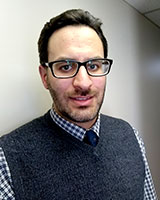
Larry LaCross, LMSW, CAADC, CCS
Many rural organizations across the country are providing MAT. With new collaborative opportunities inherent to MAT, previously siloed groups are making handling access more seamless. With these collaborations, LaCross says their Michigan organizations are changing lives of clients and their families past the whole-patient approach that is MAT.
Previously providing the counseling portion of MAT for a few specifically referred patients, LaCross explains that his CHS squad was approached by the local FQHC, Alcona Health Eye, to create an integrated intendance programme which besides included the MAT providers from the customs's Freedom Recovery Center.
"Alcona wanted to have an organized response to the local opioid problem," LaCross says. "Freedom Recovery had well-functioning MAT infrastructure processes. We were already doing the specialized substance abuse counseling, so the program design focused on delivering all these services collaboratively where patients were already getting their medical care: within the four walls of the FQHC."
Putting their entire program into a pie chart, LaCross indicates the medication-specific MAT activities are about 30% of the integrated approach. He shares that an unanticipated success for their program was participant enrollment issues.
"These clients take so much social vulnerability and not much stability," he said. "But the integrated care helps span those issues. In the end, a population who typically 'no shows' for appointments shows upwardly. Their treatment is successful, they're back to work and with their families again."
MAT Meets Wrap-Around Services In Colorado
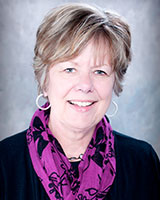
Jacqueline Brown, MSN, FNP
In rural and frontier Colorado, Southeast Health Group (SHG), a private, nonprofit corporation providing primary care and behavioral health services, is as well providing integrated OUD care in half-dozen counties. SHG'due south Master of Concrete Wellness Operations Jacqueline Brown, MSN, FNP, says the group has offered injectable naltrexone for substance use disorders, just more than recently identified a specific community demand to expand OUD treatment. Brown shares they've worked hard to integrate with primary care and, with exterior funding sources, have been able to offer other "wrap-around" services like chiropractic interventions, massage therapy, and physical therapy. Brownish explains these interventions are needed for hurting management since many of their patients have OUD tied to chronic pain conditions.
Using the pie chart instance, Chocolate-brown said that medication-specific MAT activities are most 20% of their comprehensive OUD treatment. She emphasizes their interdisciplinary teamwork is essential to creating the right plan for their OUD patients.
"Our philosophy is that MAT medications are very of import, only are not a stand-solitary treatment," Brown said. "You have to address their pain, and peculiarly address the agin life experiences that have gotten them here. Giving them [buprenorphine/naloxone] is only part of their treatment."
SHG's clients are referred past community practitioners, families, and even police force enforcement agencies. Merely Brownish says that the best testament to their plan's benefits are clients who are peer-referred, hopeful that they, too, volition have treatment success they've seen for others.
MAT Meets Telepsychiatry and Telebehavioral Wellness In North Carolina
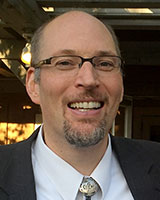
Dr. Jay Shore, chairperson for the American Psychiatric Association'south Committee on Telepsychiatry
The American Psychiatric Association's Committee on Telepsychiatry chairperson, Dr. Jay Shore, said since providing MAT medication services involve prescribing controlled substances, telepsychiatry has one pregnant challenge for MAT-prescribing psychiatrists: the constabulary.
"The Ryan-Haight Act requires an in-person visit before prescribing medications similar about of those used for MAT," Shore said. "Right now, what'due south being offered by psychiatrists through telehealth connections is education."
But MAT's counseling services can be delivered with virtual connections. Mission Health, in Asheville, Northward Carolina, is a infirmary system that serves eighteen counties (17 largely rural), five hospitals (four are Critical Access Hospitals (CAH)), and has several rural primary intendance clinics. In a June 2017 National Rural Health Resource Centre webinar, the organization detailed how its telebehavioral health's "blended model" meets distance practice needs like those in CAH emergency rooms and on medical floors. Their model was adjusted to at present provide the clinical counseling portion of MAT treatment.
Darren Boice, LCSW and Mission Health's Managing director of Ambulatory Behavioral Health, points out that their big wellness organization with rural providers has to be poised to adapt new needs like those for MAT. If other organizations look to offer similar services, he says the whole-patient arroyo around such treatments in primary care should be emphasized.
"When MAT is needed in principal care, it might be of import that your communities understand that treatment is in the context of comprehensive primary care, non a stand up-alone service," Boice said.
MAT medications are prescribed past a small number of Mission Wellness's rural primary intendance providers committed to bridging the existing treatment gap where local opioid treatment programs don't cover their Medicaid patients. The virtual starting betoken for MAT integration began with North Carolina Medicaid's pre-treatment comprehensive mental health evaluation requirement, a workflow basic to Mission Health'due south mental health providers, but less so for their primary intendance providers. With a focus on care integration, both teams now work together seamlessly.

Mission Hospital in Asheville, Due north Carolina, office of Mission Health
Mary Worthy, LMFT and Managing director of Behavioral Health Access, said she was also able to leverage schedules of their licensed mental health providers to provide counseling services via virtual connections, besides every bit some dedicated on-site hours.
"We realized there were going to be hard pieces in making this happen," Worthy said. "But, at that place was a high level of support and cooperation. 'Yep, this is hard,' and 'yes we haven't done this before, simply allow's make this happen.' It'southward working."
Addressing MAT Controversies
Experts involved with MAT treatment are familiar with its controversies. First, concerns are raised about short- and long-term benefits. Side by side, naloxone, the medication which reverses an overdose by reversing the opioid effect that stops breathing, is sometimes seen as a medication that only promotes risky drug-using behaviors, allowing users' to be rescued from perceived experiments with higher and potentially more lethal doses. Another argument surrounds buprenorphine, oft simply viewed as the exchange of ane substance of abuse for another.
To accost these concerns, MAT experts betoken out that in addition to multiple previous studies demonstrating positive impacts of MAT, current studies are focusing on better understanding of long-term results. Additionally, they point out that naloxone has prevented unnecessary deaths and its employ hasn't increased risky behaviors; behaviors that are actually an uncontrollable choice caused past opioid brain disease. Experts also say they share that the medication portion of MAT is not a drug substitution, but a treatment that controls cravings and withdrawal symptoms, in improver to decreasing infectious disease transmission.
Lastly, rural MAT experts offer what most ofttimes provides the most convincing evidence that MAT is beneficial is the personal feel: due to the pervasiveness of opioid bug in rural areas, sooner or subsequently a small, tight-knit rural community has an feel with an overdose or opioid-related death of a brother or sister, a nephew or niece, or friend who might be mom to iii. These upwards-close experiences then put MAT on the table as a viable selection to touch the opioid problem.
MAT's Rural Challenges: Where Are The Providers?
Waivered MAT prescribers don't always interpret into agile prescribers. SAMHSA's buprenorphine treatment practitioner locator provides waivered prescriber information. Recently, the WWAMI Rural Health Enquiry Middle reviewed changes in the numbers of these providers. The centre's May 2017 policy brief notes that compared with July 2012, in April 2016 rural counties without waivered providers decreased from ane,377 to 1,188. The brief also highlights that "more than than half of rural counties lacked a waivered provider."
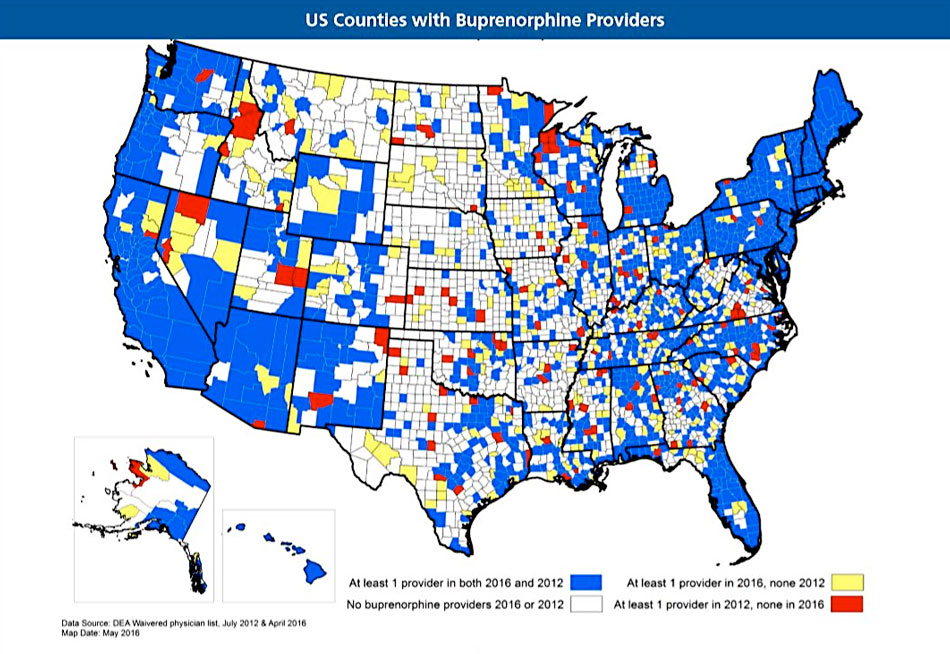
County-level 2012, 2016 comparing of buprenorphine prescribers. Prototype source: WWAMI Rural Health Research Heart
In a separate study, the center shares three challenges described past rural prescribers: fourth dimension constraints, lack of behavioral health and psychosocial support services, and concerns for drug diversion and medication misuse. A fourth challenge was inclusion of additional OUD patients into their patient roster. The researchers also note in dissimilarity to other studies, prescribers in their written report were more than concerned about drug diversion issues than finances.
Drug Diversion Concerns
Co-ordinate to the 2016 Surgeon Full general's opioid written report, diversion is described every bit a medical and legal concept involving the transfer of any legally prescribed controlled substance from the person for whom it was prescribed to another person for any illicit use. Contempo periodical manufactures, along with professional guild guidelines, admit that MAT benefits exceed drug diversion risks. Education regarding drug diversion is office of MAT waiver education. Federal toolkit documents (no longer available online) addressing diversion are also bachelor.
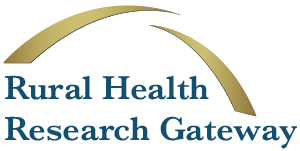 More Rural Opioid Information
More Rural Opioid Information
The Rural Health Research Gateway, funded by the Federal Part of Rural Health Policy, provides additional rural opioid data in several 2017 and 2018 periodical articles and policy briefs.
Other Rural Challenges: Infrastructure, Funding, Sharing Best Practices
Many experts envision the collaboration, infrastructure, and workforce needed for MAT volition also serve the behavioral health needs for other rural problems, like alcohol use disorder, depression and suicide prevention. But they also acknowledge that these types of services are not the norm for well-nigh of the country and therefore fifty-fifty more than problematic for rural areas.
Both the Michigan and Colorado groups limited gratitude for federal and country public support and private funding streams allowing them to expand their services to include MAT. The Mission Health team was appreciative of a Duke Endowment grant. Other organizations across the country are able to have advantage of an increased number of recent funding opportunities; for example, states and territories that are using their SAMHSA State Targeted Response to the Opioid Crisis Grants. According to SAMHSA's press release, these monies – totaling almost a billion dollars – have a MAT-focus since the grants were "for increasing access to treatment, reducing unmet treatment need, and reducing opioid-related overdose deaths." Boosted federal, state, local, and private funding sources are announced regularly to address the rural opioid public wellness emergency.
Speaking to the National Rural Health Association audience at its February Policy Institute, Assistant Secretary for Mental Wellness and Substance Abuse Dr. Elinore McCance-Katz, who directs SAMHSA, said that the 21st Century Cures Act included a mandate to create a behavioral health organisation that tin work for anybody, no matter where they lived. McCance-Katz shared that the agency is transforming itself from an agency mostly providing grants to an agency that will besides emphasize its technical assistance for providers.
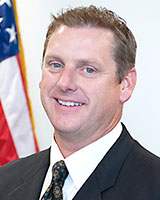
SAMHSA Region Viii Ambassador, Dr. Charles Smith
Dr. Charles Smith, psychologist and SAMHSA'southward Region 8 Administrator, said McCance-Katz's transformation charge impacts his region – and probable all the others. Referring to SAMHSA'southward regional Habit Technology Transfer Center Network (ATTCs), Smith says these centers are fundamental to providing the technical assistance needed to promote innovative practices, especially those associated with MAT.
"These regional centers are especially important for rural and frontier communities' patients and families considering local addiction and substance abuse experts will help disseminate and bulldoze good clinical practices," Smith said. "When needed, they'll exist able to leverage the expertise of experts outside the region."
Smith also shared that considering MAT is a treatment approach based on collaboration, an important patient-centered intendance infrastructure is beingness adult in these communities bringing together prescribing providers and behavioral health professionals, including peer support specialists.
The Challenge of Parity
Smith emphasizes that OUD should be considered a chronic disease; for example, like diabetes or chronic problems resulting from spinal cord injuries. As a chronic disease, another issue surfaces for OUD and MAT treatment: parity. Parity, addressed within the Mental Health Parity and Habit Equity Act (MHPAEA) as equal insurance coverage for mental and behavioral treatment as for other health conditions, is sometimes strategically continued to reimbursement problems that influence whether MAT is a sustainable service offered by rural provider groups.
In its Nov 2017 report, the President'south Commission on Combating Drug Addiction and the Opioid Crisis discusses this: "At this point, the largest outstanding result is treatment limits. Patients seeking habit treatment, including MAT, are often subjected to unsafe neglect-first protocols, a limited provider network, frequent prior authorization requirements, and claim denials without a transparent process. The Committee applauds SAMHSA's work with multidisciplinary teams from states to improve parity enforcement and public education. However, we need robust enforcement of the parity police force by the state and federal agencies responsible for implementing the police."
Smith said parity is equally important for patients as it is for providers and healthcare organizations.
"Parity exists to brand sure we're treating OUD similar any other healthcare condition," he said. "Though information technology has its limitations equally a law, it does provide a standard by which insurance companies, state insurance commissioners, healthcare systems, and ultimately patients can feel that they take a fall-dorsum system in order to say, 'You know what? My habit is as of import as my concrete wellness.'"
Last Words on MAT: Patient Stories
Komaromy emphasizes that MAT outcomes are oftentimes the untold segment of the opioid story where needles hanging from arms is often the go-to visual. Komaromy, who is also involved with Project Repeat®'due south opioid provider training programs, said missing from MAT discussions are those stories of individuals who are doing well, back with their families, back at piece of work, and stable on medication and treatment.
"I've trained around 500 physicians at this point," she said. "I e'er add something that is not included in the basic curriculum: A panel of patients who share the incredibly transformative effect that MAT's brought to their lives. There's seldom a dry out eye because those patients' stories are actually compelling. And I always hear those patient panels are the most impactful part of the grooming."
Source: https://www.ruralhealthinfo.org/rural-monitor/medication-assisted-treatment/
0 Response to "How to Talk to Family About Medication Assisted Treatment"
Post a Comment